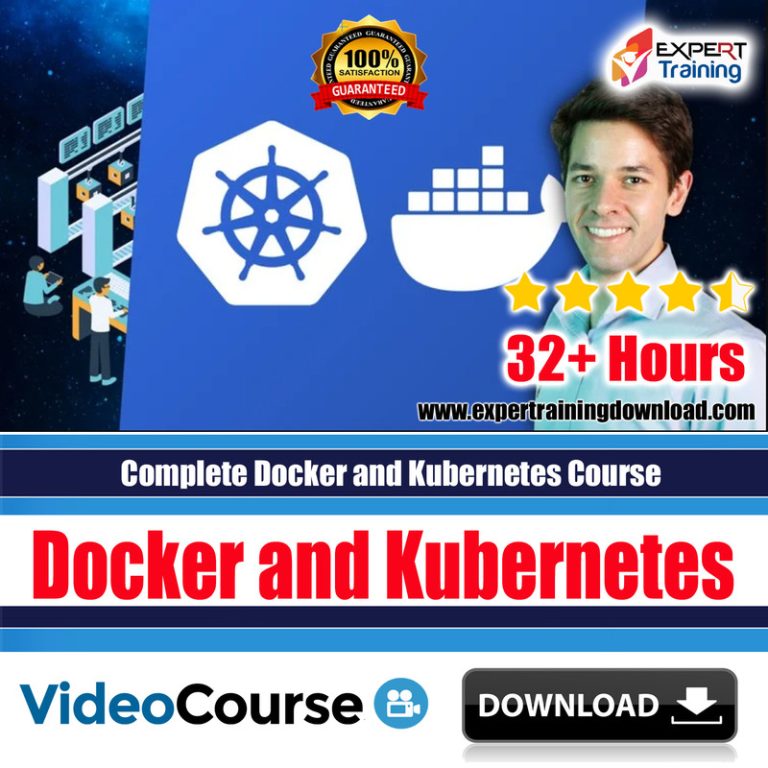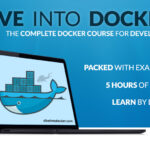Hey there! If you’re reading this, chances are you’ve heard the buzz about Kubernetes. Maybe it’s a whisper in your office, a term floating around tech articles, or perhaps your team is already talking about "container orchestration" and "cloud-native deployments." For a long time, Kubernetes felt like this mythical, incredibly powerful, yet utterly intimidating beast. It was the "thing" everyone said I needed to know, but every time I tried to dive into the documentation, my eyes glazed over.
Let me tell you, that’s where my journey with a Kubernetes course truly began. And honestly? It was one of the best decisions I’ve made for my career.
Remember Those Days? The Pre-Kubernetes Chaos
Before I truly grasped what Kubernetes could do, my world of application deployment felt a bit like a game of whack-a-mole. We’d have applications running on various servers, and each deployment was a carefully choreographed dance of SSH commands, shell scripts, and a lot of crossed fingers.
- Scaling? That meant setting up new servers, manually installing dependencies, configuring load balancers, and hoping nothing broke.
- Updates? A nerve-wracking process where downtime was almost guaranteed, and rolling back was a nightmare.
- "It works on my machine!" Oh, the classic developer’s lament. Production environments were always slightly different, leading to endless debugging sessions.
Docker had helped, immensely, by packaging our applications into neat, isolated containers. But managing dozens, or even hundreds, of these containers across multiple machines? That was still a colossal headache. It was clear we needed something more – something that could orchestrate these containers, making them work together harmoniously, reliably, and at scale.
Enter Kubernetes. Or, as I initially thought of it, "K-8-what?"
Why I Chose a Structured Kubernetes Course Over Self-Learning
I’m a big believer in self-learning. I’ve picked up countless technologies by reading blogs, watching YouTube tutorials, and sifting through official documentation. But Kubernetes felt different. It wasn’t just a single tool; it was an entire ecosystem, a philosophy, a new way of thinking about infrastructure.
My initial attempts at self-study were overwhelming:
- The Documentation Overload: The official Kubernetes documentation is comprehensive, yes, but for a beginner, it’s like being handed an encyclopedia and told, "figure out how to build a rocket." There’s no clear starting point, no hand-holding.
- Too Many Moving Parts: Pods, Deployments, Services, Ingress, Namespaces, ReplicaSets, StatefulSets, DaemonSets, ConfigMaps, Secrets, Volumes… the sheer number of concepts was dizzying. I didn’t know which parts were fundamental and which were advanced.
- Lack of Practical Context: I could read definitions all day, but I struggled to see how these pieces fit together to solve real-world problems. How do you actually deploy a simple web application using all these components?
- No Immediate Feedback: When you’re learning alone, you don’t have anyone to ask "Why isn’t this working?" or "Am I doing this correctly?"
That’s when I realized I needed a guide. I needed a structured path, someone to distill the complexity, and a place to get hands-on experience without fear of breaking a production system. I started researching "Kubernetes course for beginners" and "best Kubernetes training."
My Deep Dive: What the Course Taught Me (and How It Felt)
Choosing a course felt like a big step, but from the moment I started, I knew it was the right decision. The instructor, usually an experienced DevOps engineer or cloud architect, made all the difference. They didn’t just rattle off definitions; they told stories, used relatable analogies, and walked us through practical examples step-by-step.
Here’s what stood out and truly helped me:
-
Demystifying the Core Concepts:
- Pods: Instead of just "the smallest deployable unit," the instructor explained them as "the happy little home for your container(s)." This simple analogy made it click.
- Deployments: "This is how you tell Kubernetes, ‘I want 3 copies of my application running, always.’" It’s about desired state, not just current state.
- Services: "Think of it like a stable address, a receptionist, for your application, even if the actual pods move around." No more chasing IP addresses!
- Namespaces: "Imagine separate apartments within the same building – they share resources but keep their residents (applications) distinct." Essential for organization.
-
Hands-On Labs, Real-World Scenarios:
The course wasn’t just theoretical. Every major concept was followed by a practical lab. We spun up our own mini-Kubernetes clusters (often using tools like Minikube or KIND), wrote YAML files, deployed applications, scaled them up and down, exposed them to the internet, and even performed rolling updates and rollbacks. These exercises were invaluable. It’s one thing to read about aDeploymentobject; it’s another to actually create one and watch Kubernetes bring your application to life. -
Understanding the "Why":
Beyond how to do things, the course explained why Kubernetes was designed the way it was. We learned about the challenges Google faced, which led to its internal Borg system (the precursor to Kubernetes). This historical context helped me appreciate the elegance and robustness of its design principles. It wasn’t just magic; it was engineered to solve very specific, complex problems. -
Troubleshooting and Best Practices:
A good course doesn’t just teach you the happy path. It prepares you for when things go wrong. We covered common errors, how to usekubectl describeandkubectl logseffectively, and learned about basic monitoring tools. We also discussed best practices for writing efficient YAML, structuring our projects, and thinking about security.
Beyond the Code: The Unseen Benefits
The knowledge I gained was immense, but the impact went far beyond just understanding new commands:
- Confidence Boost: I went from feeling completely lost to being able to confidently deploy and manage applications on a Kubernetes cluster. I could contribute to discussions about infrastructure and architecture.
- Problem-Solving Skills: Kubernetes forces you to think differently about infrastructure. It trains you to decompose problems, manage state, and build resilient systems.
- Career Advancement: Suddenly, job descriptions that once seemed out of reach were within my grasp. Being proficient in Kubernetes is a highly sought-after skill in today’s cloud-native world, opening doors to DevOps, SRE, and Cloud Engineer roles.
- Speaking the Cloud-Native Language: I could now converse intelligently with other engineers about topics like CI/CD pipelines, immutable infrastructure, and microservices architecture.
Who Should Take This Leap?
Honestly, if you’re involved in software development or operations in any capacity, a Kubernetes course is a worthwhile investment. Specifically, it’s perfect for:
- Developers: Understand how your applications run in production, debug issues more effectively, and write cloud-native friendly code.
- Operations Engineers / System Admins: Transition from managing VMs to orchestrating containers, automating deployments, and building resilient systems.
- Aspiring DevOps Engineers: This is a foundational skill. It’s almost impossible to be a modern DevOps engineer without a solid understanding of Kubernetes.
- Cloud Architects: Design scalable and robust cloud-native solutions.
- Anyone Feeling Overwhelmed by Kubernetes: If you’re like I was, staring at the documentation with a blank expression, a structured course will provide the clarity you need.
Choosing Your Own Kubernetes Adventure: Tips for Finding the Right Course
If my story resonates with you, and you’re considering taking the plunge, here are a few tips based on my experience:
- Prioritize Hands-On Labs: This is non-negotiable. You learn by doing. Ensure the course has plenty of practical exercises and projects.
- Check for Up-to-Date Content: Kubernetes evolves rapidly. Look for courses that have been recently updated to reflect current versions and best practices.
- Instructor’s Clarity and Style: Watch preview lessons if available. Does the instructor explain complex topics simply? Are they engaging? A good teacher makes all the difference.
- Community and Support: Does the course offer a forum, Slack channel, or Q&A section where you can ask questions and interact with other learners? This peer support is invaluable.
- Focus on Practical Applications: While theory is important, ensure the course emphasizes how to use Kubernetes to solve real-world problems, not just abstract concepts.
- Read Reviews: Look for feedback from other beginners. Did they find the course accessible and effective?
Don’t Just Watch the Revolution, Be Part of It!
Taking that Kubernetes course wasn’t just about learning a new tool; it was about shifting my mindset, empowering myself with a critical skill, and opening up new possibilities in my career. The days of manual deployments and "it works on my machine" are largely behind me. Now, I have the confidence to build, deploy, and manage applications with a level of automation and resilience I could only dream of before.
If Kubernetes feels like a mountain too high to climb, trust me, a well-chosen course can be your most reliable guide. It’s an investment in your future, and one you’re unlikely to regret. Go ahead, take the leap – the cloud-native world is waiting for you!



